MOTORCYCLE TIRE SAFETY TIPS |
|
Know Your Pressure Level and Load Limits
Tire Wear and Care, and When to Buy Replacements
What to Consider Before You Tire-Shop
Tire Safety on the Road
|
|
✓ SAVINGS TIP: Find out if you're overpaying for motorcycle insurance!
Save money by comparing quotes.
Enter your zip to get started.
ZIP:
I’m an engineer and I deal with temperatures and pressures all day at work. When a manufacturer recommends a specific temperature and pressure for an engineered product you need to follow it, we don’t just make up numbers for fun. We do it for the public’s safety.
Your motorcycle tires are the only point of contact between you and the road and they need to be filled up properly. Checking your tire pressure on a regular basis is key to your safety.
So how often should you check your motorcycle tire pressure? Motorcycle tire pressure should be checked every two weeks if you ride regularly and should be within 1 psi (0.07 bars) of manufacturer’s specifications. Checking the pressure in each tire takes less than a minute and could save your life.
Dangers Of Running Incorrect Tire PressureTires are engineered to be filled with a specific psi so that a certain tread pattern is hitting the pavement for maximum traction. If your tire is too low then the incorrect tread pattern will be hitting the pavement and traction will be decreased.
Another danger of running too low of a pressure in your tires is cutting. The edges of motorcycle wheels are very pointed and if the tire is too low then the wheel can cut a groove in the rubber and cause a blowout.
For those of you who don’t know what death wobble is, we have a whole article about it linked here. Death wobble is when the motorcycle starts swerving back and forth rhythmically and becomes uncontrollable, but it usually only happens at higher speeds. Having too low of pressure can cause death wobble at lower speeds and can be extremely dangerous.
Having too low of pressure can cause death wobble at lower speeds and can be extremely dangerous.
Death wobble can also be caused by too high of pressure. Tires that are too inflated become rock hard, and every little bump or imperfection in the road can cause a wobble. Having the correct tire pressure is so important and I cannot stress it enough.
Tire roll or tire slip is caused by too low of pressure. It’s when your tire is not perfectly centered on the rim and is pushed a little to the left and then slumps to the right quickly, or vice versa. This rolling or slipping action is dangerous because it can yank your handlebars to the right or left and cause an accident.
Having your tires inflated too much can be just as dangerous as having them too low. Tire bounce is when your tires are filled up way too much and even small rocks or bumps in the road can lift your tire completely off the ground and bounce it back down like a basketball.
If you notice that your motorcycle is handling a bit more rough lately than it has been in the past then check your tire pressure and make sure the tires are properly inflated. A very common cause of this is during the spring when outside temperatures increase quickly. As the ambient air temperature increases, the air inside your tire expands.
The opposite is also true with cold weather. If you wake up on a cold morning and find your tires to be low, it’s because the air inside your tire has contracted and isn’t taking up as much space, so your tire deflates.
The last danger is one that I’ve seen firsthand. I was on a ride with a few friends one day and the person in front hit a small bump in the road and the bead seal on the side of the tire came open momentarily and all the air in the tire burst out of the bead. His back tire instantly went flat and his motorcycle started fishtailing side to side. Luckily he was able to bring the motorcycle to a complete stop without crashing.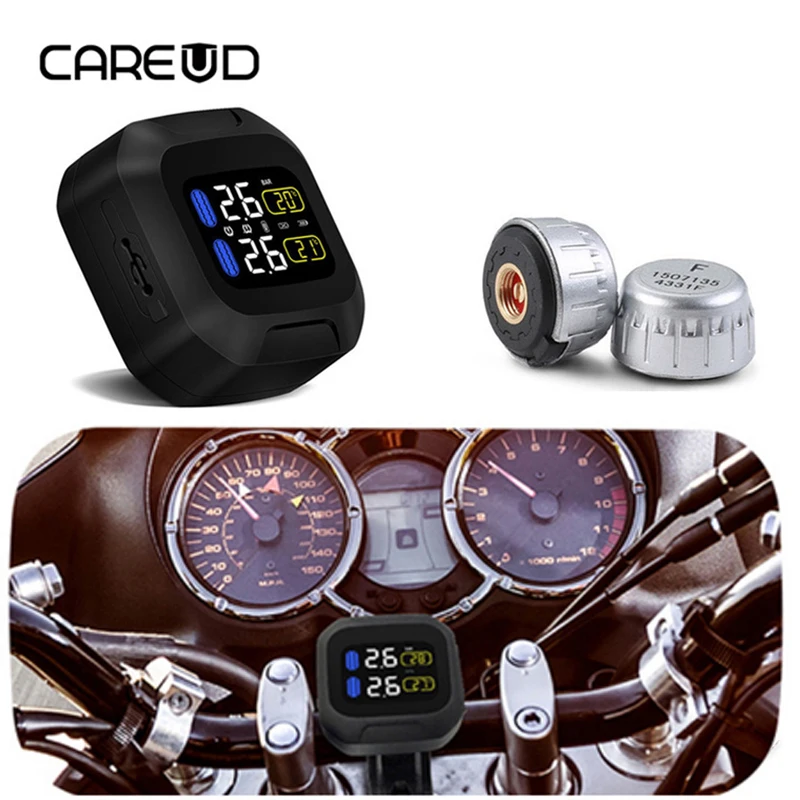
There are several places to check the correct pressure for your specific motorcycle. The most trusted source for tire pressure would be in your motorcycle owner’s manual. If you don’t have a copy of the manual then search online for a PDF copy. The manufacturer should always be the most trusted source for tire pressure as long as your tires are the original size listed in the owner’s manual.
Another place to check for the recommended tire pressure is on the sidewall of the tire. The pressure will always be listed in both psi and bar on the sidewall. The reason this is the second place I’d look and not the first is because the tire manufacturer doesn’t know how much your specific motorcycle weighs, but the motorcycle manufacturer does.
If for some odd reason your tire does not list the specific pressure on the sidewall and you don’t have access to an owner’s manual then do some searching through online forums. This is the least practical way and is not recommended. Information on forums is generally unchecked and if someone tells you the wrong pressure there is no recourse.
This is the least practical way and is not recommended. Information on forums is generally unchecked and if someone tells you the wrong pressure there is no recourse.
I have never seen a motorcycle tire that didn’t have the recommended pressure listed on the sidewall, so you shouldn’t have a hard time with this.
How To Check Tire PressureChecking tire pressure is one of the simplest forms of maintenance you can perform on your motorcycle and is easy enough that everyone should be able to do it. The steps for checking tire pressure are as follows:

A word of advice before checking your tire pressure: Do not buy the cheap $1.00 tire pressure gauges that are on the counter at auto parts stores. They are incredibly unreliable and cheap. Pay $5.00 for a decent pressure gauge that will last you a long time.
When checking your pressure, make sure you do it before a long ride when the tires aren’t hot.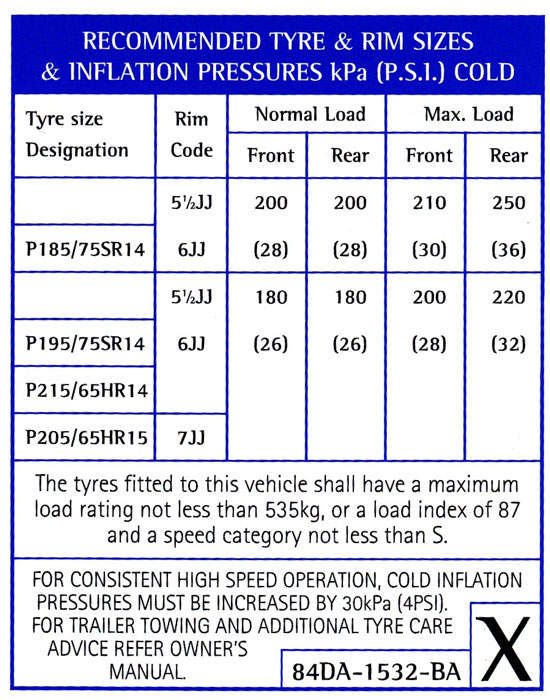 When the rubber warms up, it heats up the air inside the tire and can give you a false sense of tire pressure. The air inside the tire will cool back down after a long ride and the tire pressure will drop slightly.
When the rubber warms up, it heats up the air inside the tire and can give you a false sense of tire pressure. The air inside the tire will cool back down after a long ride and the tire pressure will drop slightly.
The subject of tire inspection goes hand in hand with tire pressure so I want to give you some basic tips of how to check some things on your tires.
Below are some of the main things you should check on your tires every few weeks, each of which will take less than a minute.
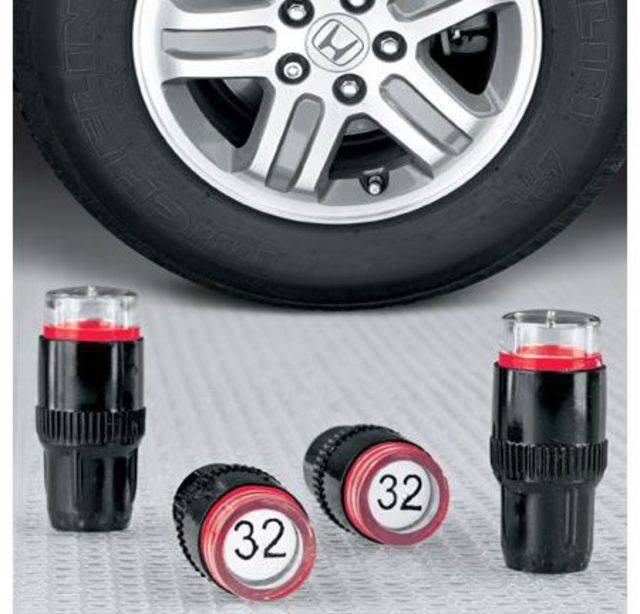 The tire pressure forces the rubber to squeeze tightly against the sharp object and won’t let air escape. If you see a nail in your tire take it to a local tire shop. Most shops will patch a small hole for free because they know you’ll come back in the future to buy new tires.
The tire pressure forces the rubber to squeeze tightly against the sharp object and won’t let air escape. If you see a nail in your tire take it to a local tire shop. Most shops will patch a small hole for free because they know you’ll come back in the future to buy new tires.We want all motorcycle riders to make it home to their families every day. Please take a couple minutes every few weeks to check your tires, it can save your life.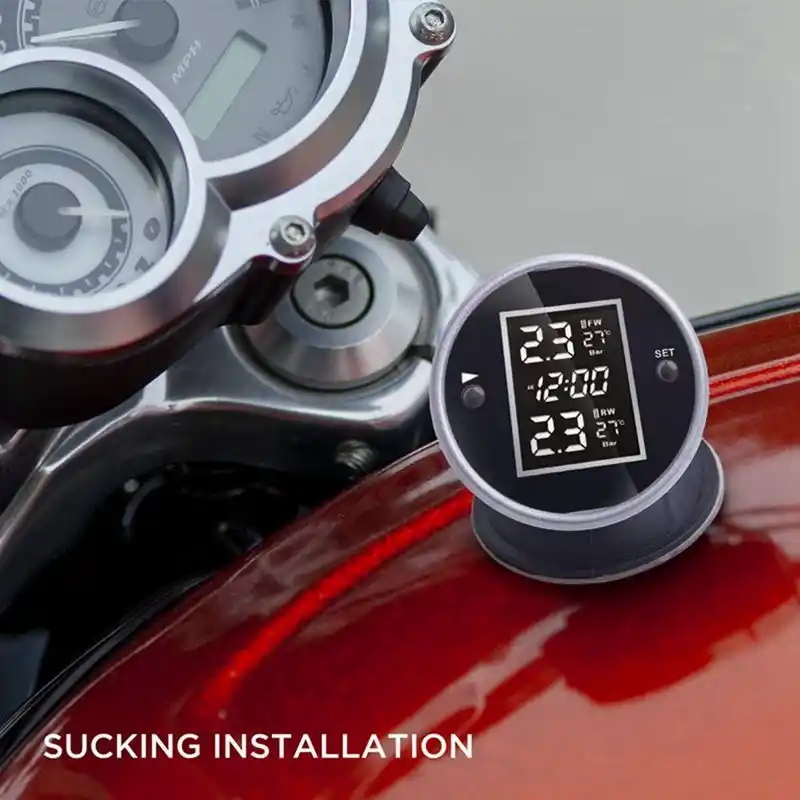
Introduction
What is the pressure in motorcycle tires?
How to properly set tire pressure?
What is the result of under/over pressure in motorcycle tires?
Conclusion
The safety and reliability of riding a motorcycle depends not only on which tires are used, but also on what level of pressure is maintained inside. It is very dangerous to treat this carelessly. And why and how to correctly calculate the pressure in motorcycle tires - read our article and find out.
Air, like any substance, expands when heated and contracts when cooled. This is also true for motorcycle tires - when hot, one level of pressure is maintained inside the tires, and when it is cold, it is completely different. Tire pressure is important, as it is responsible for the most important characteristics for any bike - both scooter and sport enduro:
Handling and maneuverability on dry and wet surfaces;
The size of the contact patch is directly responsible for traction;
Suspension workload;
Fuel consumption;
Wear resistance.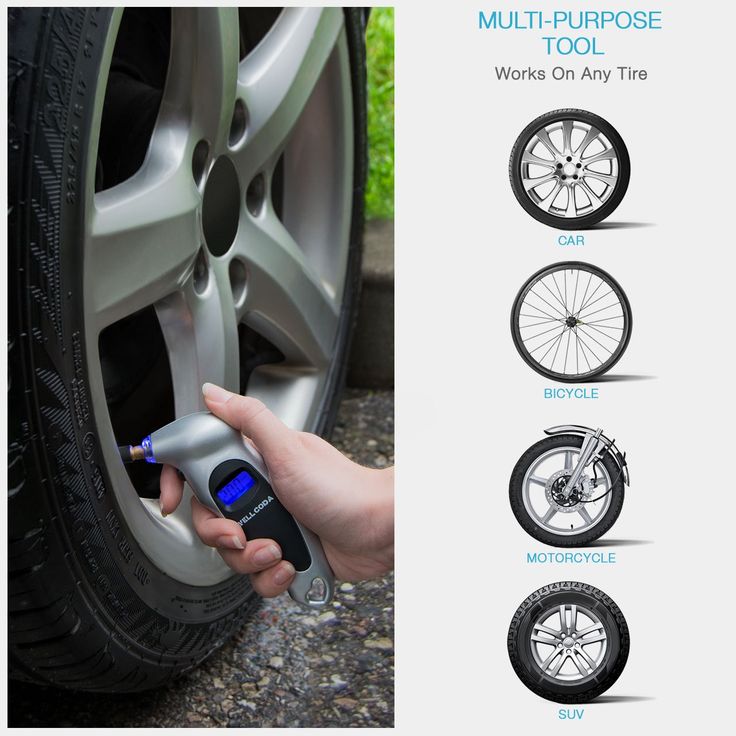
In short, only correctly inflated tires can do their job well - to keep contact with the track and not lose it throughout the entire trip. Any deviation from the norm (lack or excess of pressure) is fraught with unpleasant consequences.
Front and rear tires must have different pressures and this is important to understand before handling the pump. The owner's manual of any bike always indicates the optimal pressure for cold tires, so if you measure the indicators immediately after the ride, do not be surprised that the pressure gauge will show different values - the air inside has warmed up and expanded.
The manufacturer indicates all parameters of cold rubber inflation on the table on the motorcycle frame or in the user manual. They vary depending on the type of motorcycle, but, as a rule, the data varies between 2.0-2.5 atm for the front wheel and 2.2-2.9Atm for rear. If you plan to put another person on the bike, we recommend inflating the tires by 0. 2 atm.
2 atm.
| Wheel size | Pressure, front/rear, kgf/cm2 (atm) | |
|---|---|---|
| Normal load | Full load | |
| 100/60-10 | 2.2/2.3 | 2.3/2.4 |
| 130/60-13 | 1.8/2.0 | 2.0/2.2 |
| 130/70-12 | 2.2/2.3 | 2.3/2.4 |
| 120/70-12 | 2.25/2.3 | 2.3/2.4 |
| 110/70-12 | 2.2/2.3 | 2.3/2.4 |
| 120/80-12 | 1.8/2.0 | 2.0/2.2 |
| 130/70-10 | 1.8/2.0 | 2.0/2.2 |
| 100/90-10 | 1.9/2.1 | 2. |
| 120/90-10 | 1.8/2.0 | 2.0/2.2 |
| 130/90-10 | 1.9/2.1 | 2.0/2.2 |
| 3.0×10 | 1.75/2.0 | 2.0/2.1 |
| 3.50×10 4PR | 2.5/2.5 | 2.6/2.6 |
Hot pressure depends on many factors up to the riding style of the rider, so they will have to be selected individually for each specific case:
To begin with, inflate the tires to 2-2.3 atm, given that for the rear tire the pressure should always be 0.3 atm more than for the front.
Ride at your normal pace for 10-15 minutes. The pressure in the rear and front tires should increase by an average of 0.2 atm.
Then use the pressure gauge again: if it shows a value within the normal range of cold pressure, then you have achieved your goal. If it is higher, then lower the wheels, if lower, pump up. Measure tire pressure and adjust the amount of air inside until you get the result.
If it is higher, then lower the wheels, if lower, pump up. Measure tire pressure and adjust the amount of air inside until you get the result.
If you notice a slight discomfort immediately after the start, this is normal. The rubber needs to warm up a little and after five minutes everything will return to normal.
If you overinflate your tyres, get ready for the fact that the contact patch will decrease, and with it the traction will deteriorate, the ride will become much harder, there will be a possibility of vibration, and the load on the suspension will also increase significantly. Riding in over-inflated tires on a wet road is quite dangerous, because due to the small contact area, the motorcycle will begin to skid in corners and brake poorly. The most unpleasant consequence will be a deterioration in strength and wear resistance. Motoshina can even explode when driving on hot asphalt - one pebble can cross out everything.
Increased tire pressure is used only in two cases: if there is another passenger on the motorcycle or during long high-speed races.
Under-inflated tires have their own list of problems: their contact patch may be larger, but due to its irregular shape, it wears out and deforms extremely quickly. Of the useful qualities of rubber, handling, maneuverability, directional stability and fuel consumption are seriously affected. In the end, if you do not correct the pressure in the motorcycle tires, everything will end with a cord detachment. If your motorcycle has wheels with chambered tires, then insufficient inflation of the chambers will sooner or later lead to accidental disassembly.
Riding on underinflated tires is practiced only on special enduro sports bikes for off-road stunts.
However, in order to calmly control a motorcycle, it is not enough just to set the correct tire pressure and calm down on this - we also recommend that you refer to the speed index table.
| Speed index | Maximum speed, km/h |
|---|---|
| A | 40 |
| B | 50 |
| C | 60 |
| 65 | |
| E | 70 |
| F | 80 |
| G | 90 |
| J | 100 |
| K | 110 |
| L | 120 |
| M | 130 |
| N | 140 |
| P | 150 |
| Q | 160 |
| R | 170 |
| S | 180 |
| T | 190 |
| U | 200 |
| H | 210 |
| V | 240 |
| W | 270 |
| Y | 300 |
| VR | >210 |
| ZR | >240 |
| (W) | >270 |
| Z | >300 |
It is forbidden to put tires with a low speed index on high-speed motorcycles - they may not cope with the capabilities of the motorcycle, which will not lead to anything good.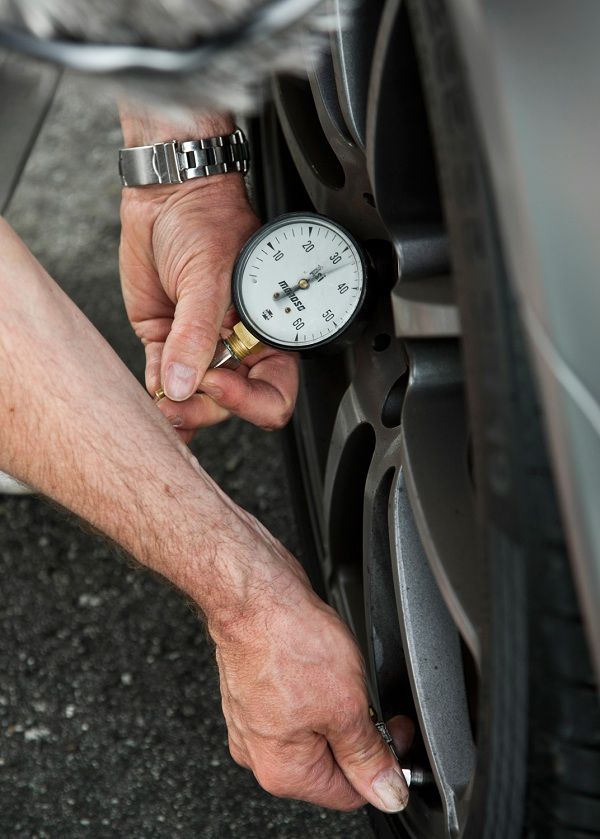
It is very important to check the pressure in the motorcycle tires in time to always be aware of its technical condition and not provoke a breakdown. Owners of sports and cross-country bikes, who constantly experience heavy loads, have to control it especially closely. It is the accuracy of the measuring device - the pressure gauge - that is extremely important. Often the point is not at all in the setting, but in a bad device that simply gives false readings. If the error reaches 0.5 Atmospheres, then you better choose another device for yourself. In the BlackTyres online store, you can easily find a reliable pressure gauge, and with it the right pressure in motorcycle tires, which will help them to reveal their best sides and characteristics.
• Manometer;
• Technical specifications for the motorcycle and its tires;
• Motorcycle hand tire pump or air compressor (compressed air units can be found at some gas stations).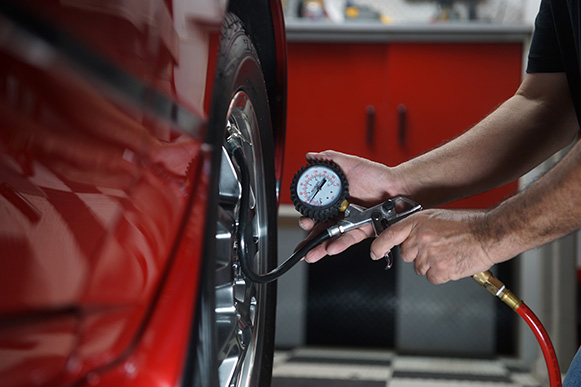
The pressure gauge should measure pressure within the appropriate range and in the appropriate units that you can work with (in Europe it's bar, in North America it's pounds per square inch (PSI)). Many professional pressure gauges are capable of measuring in both units. Slider type gauges with a sliding plastic stem are relatively inexpensive, but they are capable of making fairly accurate measurements.
The correct tire pressure for a particular motorcycle will be indicated in its Owner's Manual. If it is not at hand, then this question can be checked with a mechanic, read the specification on the side of the tire of the selected brand, or call the dealership where you bought the motorcycle.
A manual motorcycle tire pump does a great job when you need to pump air, and it's a lot cheaper than an air compressor. In addition, it is easy to carry and does not require electricity. A tire pump is an essential part of a motorcycle tool kit. Of course, if necessary, you can use the pumps at gas stations, but always double-check the pressure with your own pressure gauge.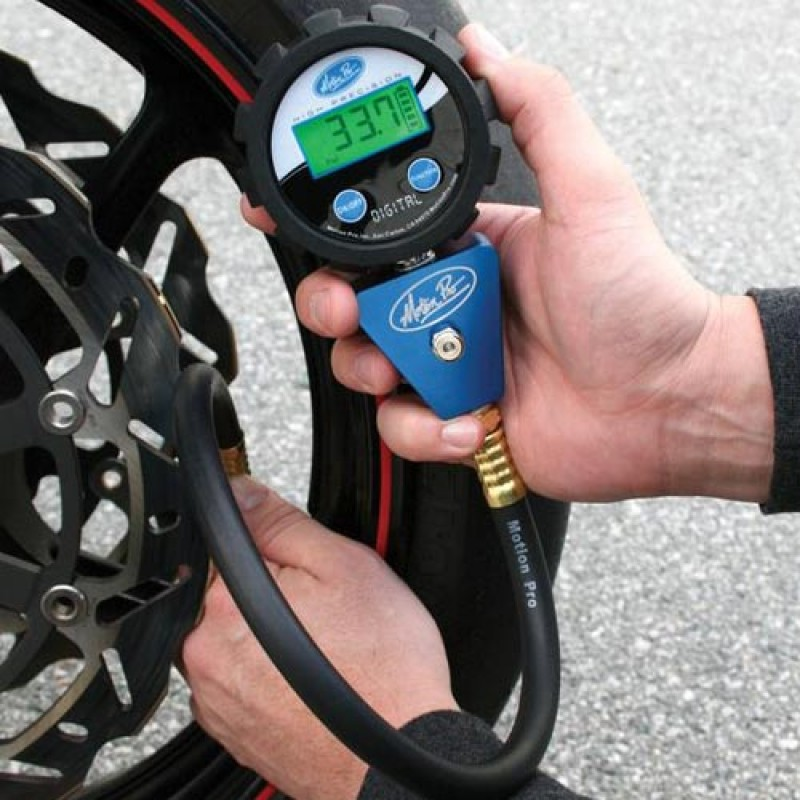
Tip:
Be sure to use your own pressure gauge to double-check the pressure after filling the tires with air. Service station pump gauges are considered relatively inaccurate measuring devices. Also, your pressure gauge should be the only one that will be used to ensure correct readings. Each measuring device is unique in its own way.
Over-inflated tires will wear out prematurely, damaging both the tread itself and the tire rim. Excessively high pressure can also reduce traction.
• Locate the valve stem on the inner surface of the wheel rim. For convenience, it may be necessary to roll the motorcycle back and forth until the valve stem is easily accessible. Sometimes the valve stem has a cap (which protects the valve from dirt, debris, and damage). In order to remove it, you need to unscrew it by turning it counterclockwise.
• After removing the cap, the end of the valve will be visible.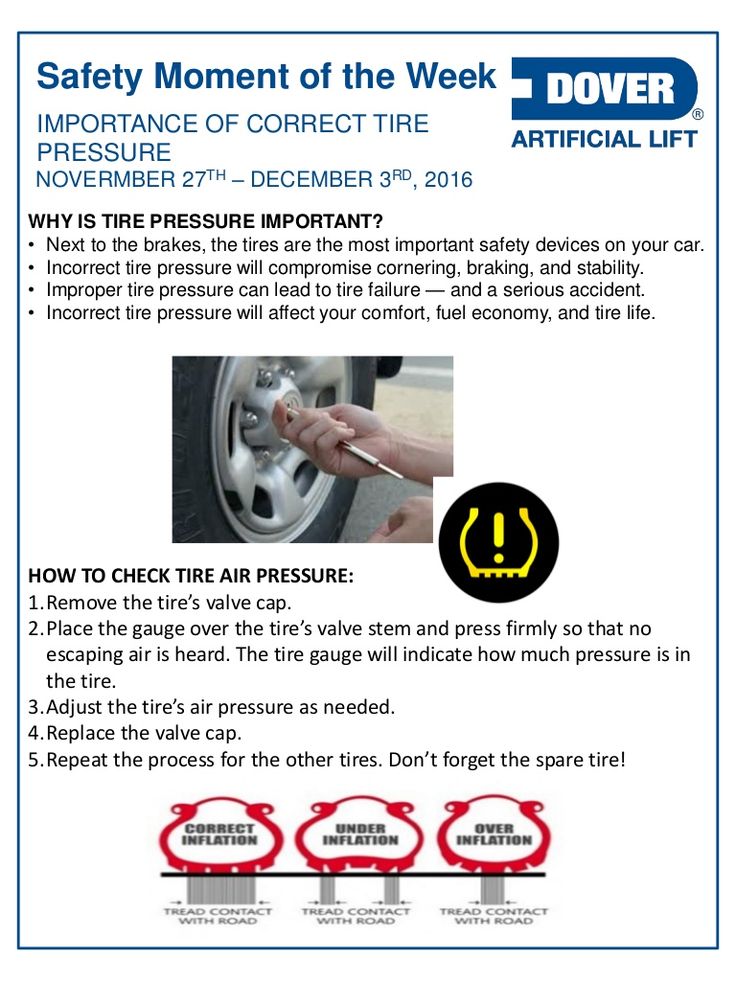 Make sure it is clean and then install a pressure gauge on the end of the valve, carefully aligning it before pressing on the valve stem.
Make sure it is clean and then install a pressure gauge on the end of the valve, carefully aligning it before pressing on the valve stem.
• First check that the pressure gauge has been reset to zero or that the dipstick has been returned to its original position. If a hissing noise is heard or air is felt to come out, this means that the pressure gauge is not set correctly and the measurement results will be incorrect.
• Remove pressure gauge and try again. If no air leakage sounds are heard, the pressure gauge is correctly attached. Most pressure gauges retain their readings after they are removed from the valve. If a slider gauge is used, be careful not to move the end of the gauge before reading the measured pressure.
• By knowing the air pressure level in the tire, it can be adjusted accordingly to achieve the desired value. When pumping air, it's always easy to pump too much in and then bleed to get the pressure you need. However, it is worth adding air little by little, and then you need to check again until the correct pressure is ensured in the tires.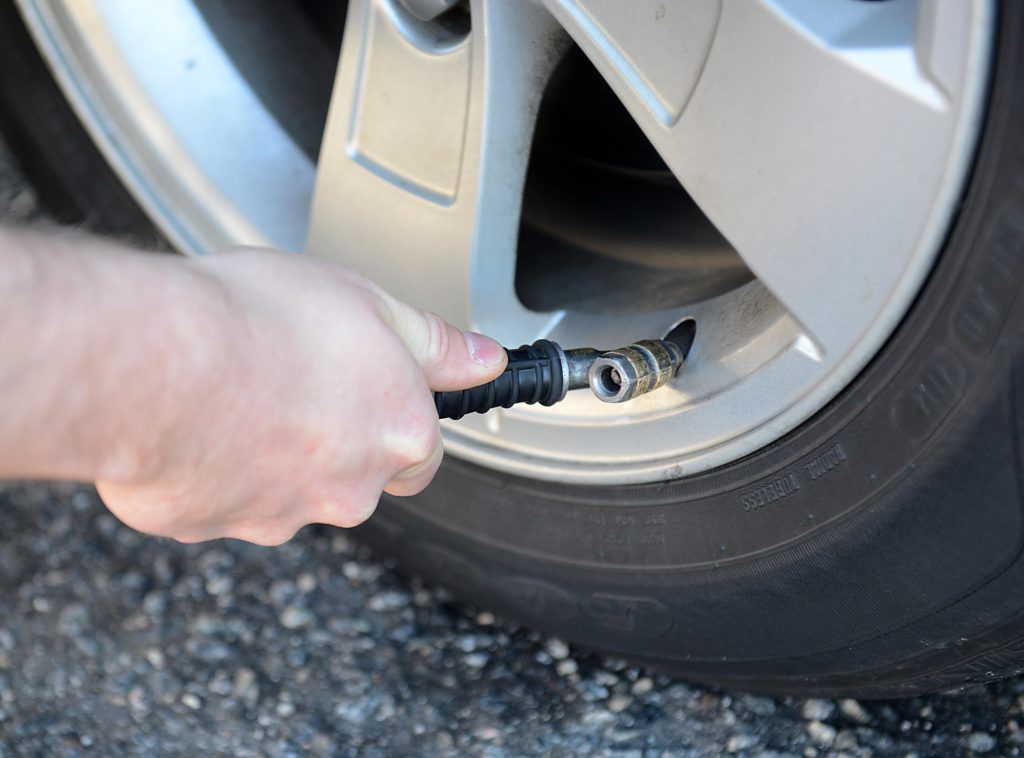
• If excess air is to be bled, the pin in the center of the valve stem can be pressed down with a fingernail, or often at the opposite end, gauges have a small angled tip for this purpose. Once the pressure is at the desired level, replace the valve stem cap.
Checking the tire pressure on the rear wheel is a little tricky due to the presence of the chain and rear brake discs. If the motorcycle is equipped with a center rack, then it will be very useful for this task.
Repeat the above process for the rear tire. When finished, screw the cap back onto the cleaned valve stem.
Look for the following: tread depth, signs of uneven wear or undulations, signs of aging such as small cracks in ruts, and any signs of puncture damage. If you find something like a nail or screw in your tire, but the tire is still holding pressure, don't remove it until you've taken the motorcycle to the nearest service station. If you remove a foreign object from the tire, it can immediately release all the air.